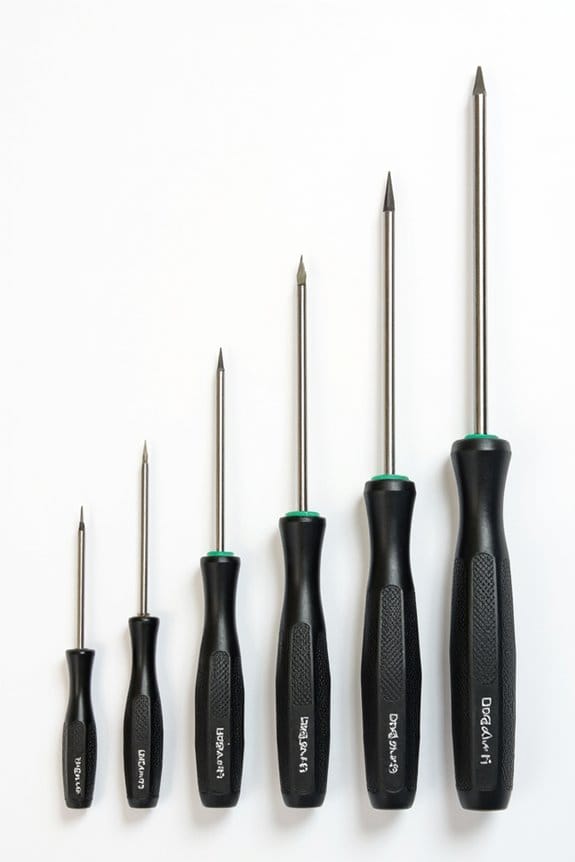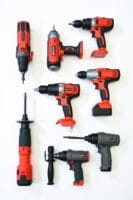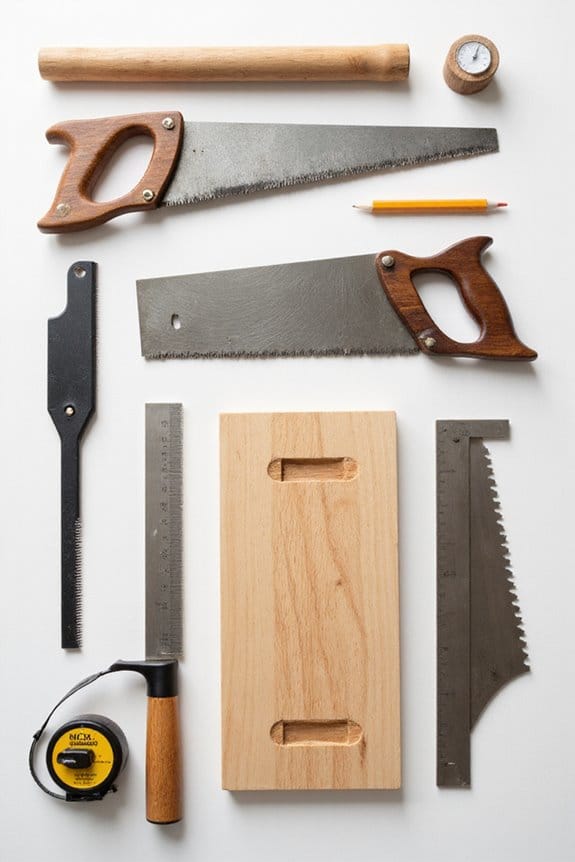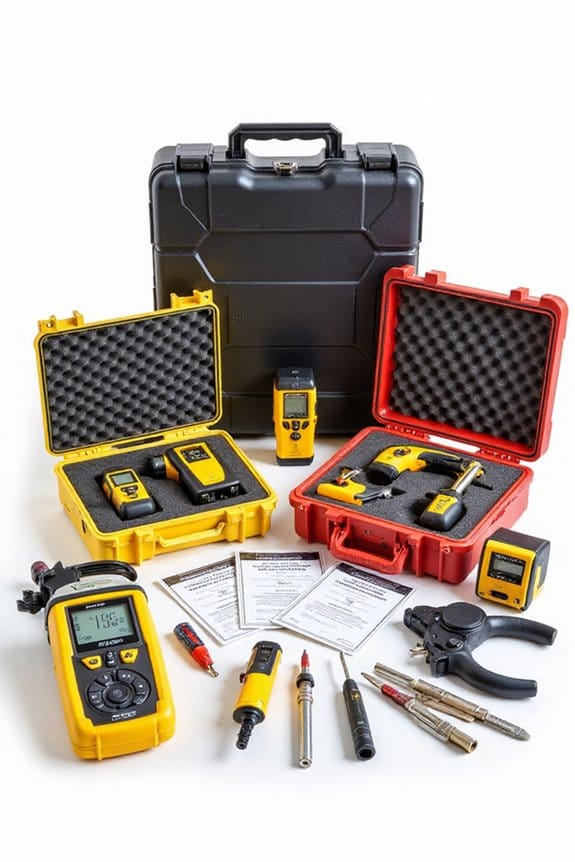Screwdrivers come in a wide range of sizes to fit various screws and tasks. Here’s a quick breakdown: 1) Flathead sizes range from 3/32″ to 1/4″. 2) Phillips heads go from #0000 for tiny jobs to #3 for construction. 3) Torx sizes span from T1 to T100, with T10 to T30 being popular. 4) Hex keys vary from 0.7 mm to 36 mm. 5) Pozidriv ranges from PZ0 to PZ5. Stick around, and I’ll help you choose the right size for your project!
Key Takeaways
- Flathead screwdrivers are sized by head width and shaft length, with common sizes including 3/32″, 1/8″, and 1/4″ for general use.
- Phillips head screwdrivers range from #0000 (1.0 mm) for precision to #3 (5.0 mm) for construction tasks.
- Torx screwdrivers come in sizes T1 to T100, with T10, T15, and T25 being popular for general projects.
- Hex (Allen) keys are available in metric (0.7 mm to 36 mm) and inch sizes (1/16″ to 1/4″) for various applications.
- Pozidriv screwdrivers range from PZ0 for tiny screws to PZ5 for specialized tasks, with PZ2 being most common for household use.
Flathead Screwdriver Sizes

When it comes to flathead screwdriver sizes, knowing the right dimensions can make all the difference in your projects. Flathead types are typically sized by the head width and shaft length, like 3/32 by 1 1/2 inches. Here’s a quick guide to help you choose:
- Common Inch Sizes: 3/32″ (2.4mm), 1/8″ (3.2mm), and 1/4″ (6.4mm) are great for general applications.
- Metric Sizes: If you’re working with electronics, consider sizes like 2.5mm or 3mm for precision.
- Shaft Length: Shorter shafts are ideal for tight spots, while longer ones reach deeper screws.
Phillips Head Screwdriver Sizes
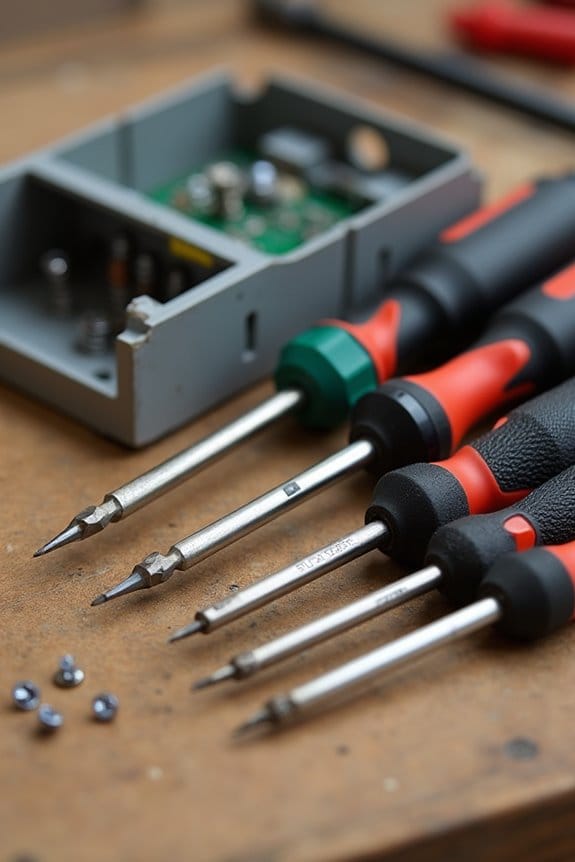
Phillips head screwdrivers are essential tools in any DIY enthusiast’s toolbox, and knowing the right sizes can save you a lot of hassle. The Phillips screwdriver history tells us it was designed for better torque and grip, and it’s made from durable materials like steel for longevity. Here’s a quick size breakdown:
- #0000: 1.0 mm tip for precision tasks.
- #0: 2.5 mm, great for small electronics.
- #1: 3.0 mm, perfect for appliances.
- #2: 3.5 mm, the most commonly used size for household repairs.
- #3: 5.0 mm, ideal for construction.
Using the right size prevents cam-out and damage, keeping your projects smooth. Trust me, investing in a good set is worth it!
Torx Screwdriver Sizes
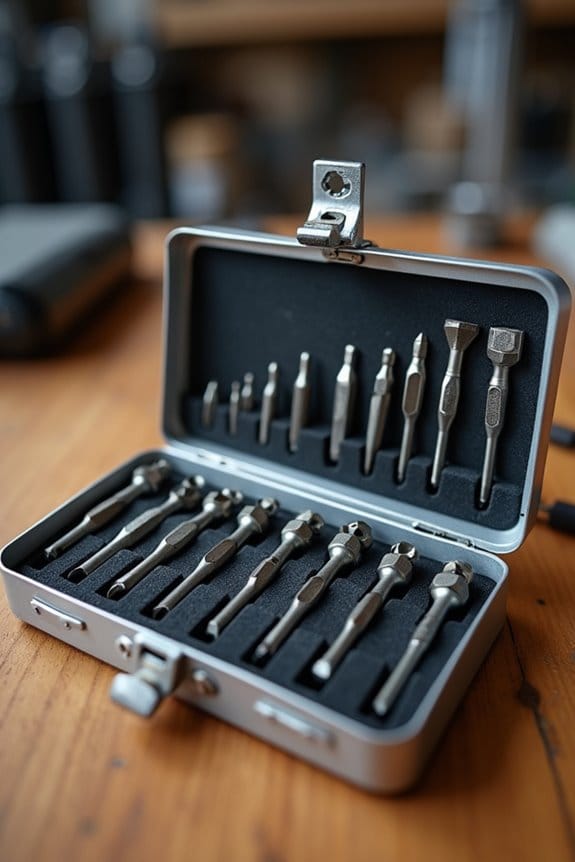
Torx screwdrivers come in a wide variety of sizes, from T1 all the way up to T100, making them a versatile addition to any toolkit. If you’re tackling common projects, I recommend starting with T10, T15, and T25—they’re perfect for everyday torx screwdriver applications.
Here’s a quick torx size chart for reference:
- T10 – Fits #10-#12 screws
- T20 – Works well with 1/4″ screws
- T30 – Ideal for 3/8″ screws
Larger sizes, like T40, are used in heavier-duty tasks, while tamper-proof versions, like TPX10, add security. Just remember, matching the right size to your screws boosts efficiency and reduces wear. Happy screwing!
Hex (Allen) Key Sizes
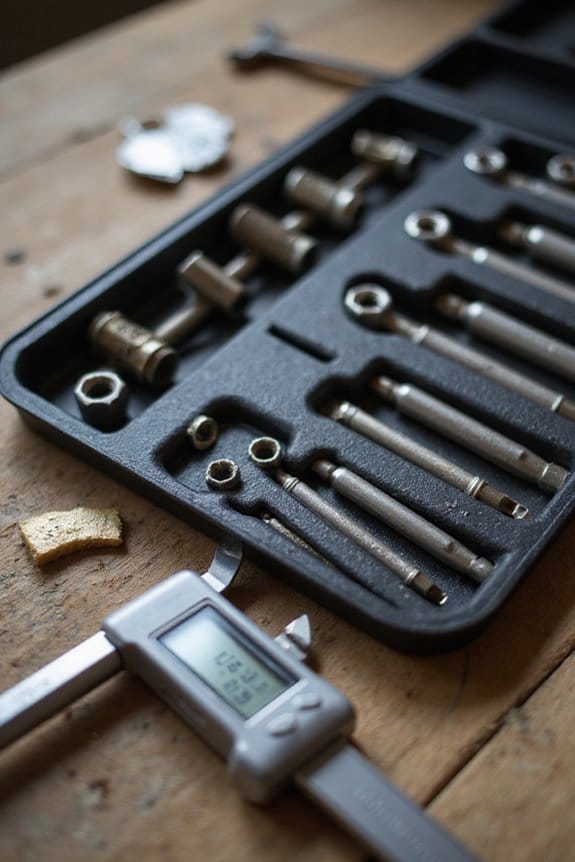
Hex (Allen) keys might seem simple, but they’re essential tools for a wide range of tasks. When it comes to hex key applications, understanding sizes can save you a headache! Here’s a quick breakdown:
- Metric Sizes: They range from tiny 0.7 mm up to 36 mm. Common sizes include 6 mm (1/4 inch) and 10 mm.
- Inch Sizes: These correspond to fractions like 1/16″, 1/8″, and 1/4″.
A lot of folks use sets that combine metric vs inch sizes, making it easier to tackle various projects. Whether you’re tightening furniture or fixing your bike, having the right hex key is vital. Trust me, using the wrong size can lead to stripped screws and frustration! Keep a set handy; you’ll thank yourself later!
Pozidriv Screwdriver Sizes
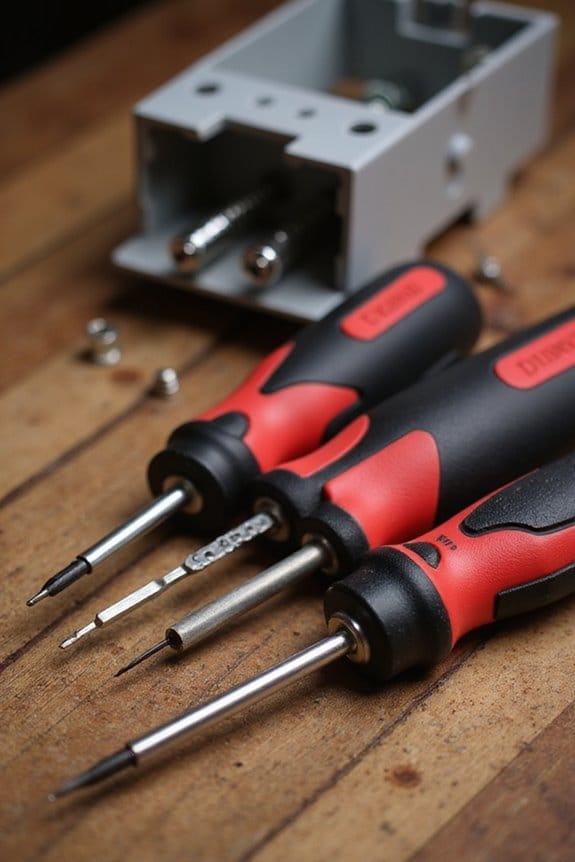
When you’re working on projects that involve screws, knowing your screwdriver types can really make a difference. Pozidriv screwdrivers come in sizes ranging from PZ0 to PZ5. Here’s a quick breakdown:
- PZ0: Great for tiny screws, often found in electronics.
- PZ1: Best for small screws sized 2 to 4 mm—think light mechanical tasks.
- PZ2: The most common! It fits medium screws (5 to 9 mm) for household and automotive use.
- PZ3: Handles larger screws (10 to 14 mm) for heavy-duty work.
- PZ4 and PZ5: These are for specialized applications requiring more torque.
Made from durable Pozidriv materials, these screwdrivers guarantee a solid grip and minimize cam-out. Happy screwing!
Square (Robertson) Screwdriver Sizes
If you’re diving into the world of screwdrivers, you’ll quickly find that Robertson (or square) screwdrivers are a must-have in your toolkit. They come in sizes ranging from #00 to #4, ensuring you’ve got what you need for various tasks. Here’s a quick breakdown:
- #00 – Fits screws 1-2, often used in precision work.
- #0 – Fits screws 3-4, great for small electrical components.
- #1 – The most versatile, fits screws 5-7, ideal for general applications.
- #2 – Suitable for larger screws 8-10, common in building work.
- #3 – Fits very large screws, perfect for heavy-duty tasks.
The advantages of Robertson screwdrivers include excellent torque and a tapered design that keeps screws in place. Trust me; they’re worth having around!
Common Uses for Screwdriver Sizes
While you might think all screwdrivers are created equal, each size serves specific purposes that can make or break your project. Here’s a quick rundown of common screwdriver types and their uses:
- Flat Head: Small sizes (1–3 mm) are great for electronics, while larger ones (5.5 mm+) handle automotive tasks.
- Phillips: Smaller sizes (#0000 to #1) work for eyeglasses, and larger sizes (#4 to #5) tackle heavy machinery.
- Torx: Smaller sizes (T1–T5) are for smartphones, while larger ones (T30–T40) are perfect for heavy-duty equipment.
- Pozidriv: Similar to Phillips but better for torque; useful in woodworking and construction.
- Hex (Allen): Ideal for everything from bicycle maintenance to industrial assembly.
Keeping the right sizes handy is essential for effective tool maintenance. Trust me, it saves time!
Understanding Screwdriver Measurements
Understanding screwdriver measurements can seem a bit complicated, but it’s actually pretty straightforward once you get the hang of it. Here’s a quick guide:
- Tip Width: Measured in mm or inches, flathead tips range from about 0.7 mm to over 14 mm. Phillips sizes are numbered (#0 to #4), with #2 being the most common for home use.
- Blade Length: This varies widely. Precision screwdrivers are tiny, while larger ones can reach 15 cm or more.
- Thickness: Standard thicknesses help with torque. You want the right match for your screw to avoid slipping.
Familiarizing yourself with these measurement standards across different screwdriver types can make all the difference in your DIY projects!
Choosing the Right Screwdriver Size
Choosing the right screwdriver size can feel a bit intimidating at first, but it’s really just about matching the tool to the task. Here’s a simple guide:
- Identify the Screw Type: Is it Phillips, flathead, or Torx? Each requires a different screwdriver.
- Size Matters: For small screws, use precision screwdrivers. Medium screws need standard sizes, while larger screws require heavy-duty options.
- Consider Length and Thickness: Longer shafts help reach recessed screws, while thicker handles offer better grip.
- Materials and Ergonomics: Look for screwdriver materials that offer durability and ergonomic designs for comfort during use.
Importance of Using the Correct Screwdriver Size
Using the right screwdriver size isn’t just about convenience; it can make or break your project. Here’s why it matters:
- Tool Longevity: A correctly sized screwdriver reduces wear and tear on the tips, extending their life. No one likes replacing tools often, right?
- Work Efficiency: A snug fit means better torque transfer, making your job faster and easier. Plus, you avoid the frustration of stripped screws.
- Prevention of Damage: Using the right size keeps screws intact, saving you from future removal headaches.
- Safety First: Mismatched screwdrivers can slip and cause injuries. Trust me, it’s not worth the risk!
Frequently Asked Questions
How Do I Determine the Right Screwdriver Size for My Project?
To determine the right screwdriver size for my project, I first identify the screwdriver types needed and guarantee I match them with the screw head. Using proper fastening techniques helps avoid damage and guarantees a secure fit.
Can I Use a Screwdriver Size Larger Than Needed?
I’ve found that using a larger screwdriver can be risky. It might fit, but it can hurt tool performance and lead to slippage. Always prioritize screwdriver compatibility for the best results and to avoid damage.
What Materials Are Screwdrivers Typically Made From?
When I think about screwdriver types, I consider their material properties. Most are made from durable metals like Cr-Mo or Cr-V, while handles often use rubber or plastic for comfort and grip during use.
How Do I Maintain My Screwdriver for Longevity?
Did you know proper screwdriver care can extend tool life by up to 50%? I make certain to clean, lubricate, and store my screwdrivers correctly, keeping them organized in a toolbox to avoid damage and guarantee longevity.
Are There Universal Screwdriver Sets Available?
Absolutely, I’ve found that universal screwdriver sets are incredibly handy. Their advantages include a variety of sizes and types, making them perfect for any task. They simplify projects and save me from constantly searching for the right tool.

